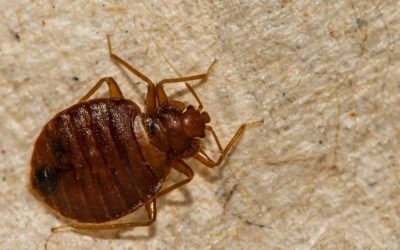What should I do if I have bed bugs?
It’s happened. You wake up one morning to find bed bug bites.
While it’s not an experience most of want to have, it’s more common than you think: according to Pestworld, 1 in 5 houses in the U.S. experience bed bug infestations.
Contrary to popular belief, bed bugs are not attracted to dirt. Instead, they’re drawn to food (your blood) and CO2 (what you exhale). Therefore, humans are what attract bed bugs.
So, what to do?
In order to know how to treat bed bugs, it’s important to first learn a bit about them.
What are bed bugs?
Bed bugs are small creatures that drink human blood to survive. Extremely resilient, they can go anywhere from 20 to 400 days without feeding. The size of an apple seed, their flat bodies can fit in small crevices near humans sleeping: mattress seams, outlets, behind wallpaper, in luggage – most anywhere!
They commonly go weeks, if not months, without being noticed in homes. They’re usually not discovered until the signs of bed bugs start appearing.
How do I get rid of bed bugs?
Unfortunately, bed bugs are some of the most difficult pests to get rid of.
This is in part because of their small size (it’s very difficult to find all bed bugs in a room), reproduction rates, ability to go long times without feeding, and resilient eggs.
While it’s highly recommended to hire a pest control company to get rid of bed bugs, awareness of common treatments can help you decide what will work best for you and your family.
Most pest control companies will have specialized tools and knowledge on how to apply these methods (and others) – making sure bed bugs don’t return.
Common Bed Bug Control Methods
1)
Vacuuming
Vacuuming is an excellent first step in eradicating bed bugs. Since most bed bugs live within 8 ft. of a bed (or sleeping space), pay special attention to anything within this range: bed, dressers, upholstered furniture, and near baseboards. Thanks to their small size, a vacuum is unlikely to reach every hiding place, but it’s a great start.
As an infestation progresses and they multiply, bed bugs are likely to spread into areas like seams of furniture, curtains, and even inside electrical sockets.
Some things to remember:
- Vacuuming does not pick up bed bug eggs; these are attached to the surface with a sticky cement like substance.
- Does not kill bed bugs; be sure to securely close and dispose of the vacuum bag.
- Not likely to remove all bed bugs from deep crevices and hiding spaces.
2)
Mattress Encasing
Once vacuumed, a high quality mattress encasing will make sure any remaining bed bugs can’t escape. Be sure to invest in a quality one, as many cheap options don’t keep in bed bugs.
What to look for:
- Tightly woven so bed bugs can’t bite through the fabric.
- Zippers that are specifically built so bed bugs can’t escape, even in their first stages of life when they’re smallest.
Keep in mind, bed bugs can go anywhere from 20 to 400 days without feeding, so it’s important to leave it in long-term. Also, this doesn’t do anything against bed bugs (or their eggs) in the room, so it’s best used alongside other pest control methods.
3)
Cleaning Up Clutter
While clutter doesn’t attract bed bugs, it certainly gives them a place to hide. Clearing your living space of old magazines, clothing, and toys ensures bed bugs won’t have as many places to hide.
Be careful about moving items or furniture from a bed bug infested room to another space – bed bugs will come with it.
4)
Bed Bug Interceptors
These inexpensive tools are placed underneath bed frame legs to keep bed bugs from crawling up. For optimal use, be sure to block all possible ways bed bugs could climb onto your bed, including dust ruffles, hanging blankets, and any nearby furniture or curtains.
Keep in mind, this doesn’t do anything against bugs already in your bed, so it’s best used with other pest control methods (including vacuuming and mattress encasing).
5)
Hot and Cold Treatments
Bed bugs can’t live above 113 degrees F for 90 minutes, or 118 degrees F for 20 minutes. Eggs, however, are more resilient: they can withstand heat of 120 F (but not for over 90 minutes).
Many pest control companies use either extreme heat or cold to completely remove bed bugs. Seek out a quality pest control company, since it often takes knowledge to apply to ensure bed bugs don’t move to other areas of the home instead of getting rid of them.
For an at home solution, putting items in the dryer on high heat for at least 30 minutes can effectively kill bed bugs – although this does nothing against bed bugs throughout the home.
These preventative efforts used together with a pest control company are a great way to keep your home a bed bug free zone.
Remember, bed bugs are extremely difficult to remove due to their small size and ability to reproduce rapidly. Many of these preventative efforts can help stop the spread, but will do little against eggs and bed bugs already in your home. To completely eradicate bed bugs, it’s best to use preventative measures along with a trustworthy pest control company to get the best results.



